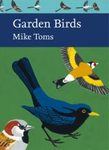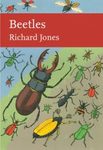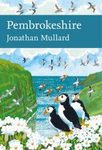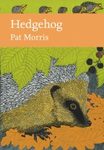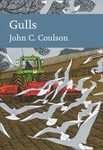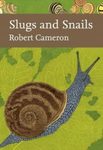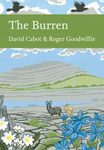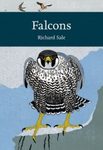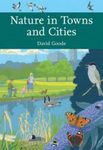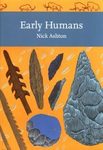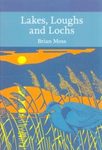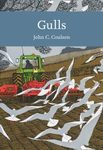Monograph
By: Penny Anderson(Author)
511 pages, colour photos, colour illustrations
A survey of unique landscapes and ecosystem that should be of great interest to naturalists and to the thousands of ramblers who visit the Peak District every year.
![Peak District Peak District]()
Click to have a closer look
About this book
Customer reviews
Related titles
About this book
*We have a very limited number of bookplates signed by Penny for this edition, available while stocks last
Lying as it does at the heart of industrial England, this area of intimate wooded dales, steep-sided gorges and windswept boggy moorland, is perhaps the most welcome of all Britain's National Parks; certainly, it is the most accessible, for within 75 miles of its border lives nearly half the population of England, and the rich variety of its scenery attracts tens of thousands of visitors yearly.
Peak District is the general introduction to the region for naturalists. It presents a concise account of the Peak District's geological structure and history from ancient upheavals to the effects of erosion today – of its woods and wild flowers, its mosses and fungi, birds and fishes, roads and villages and farms, its weather and its rural economy.
To the many thousands of ramblers who visit the Peak District at weekends, summer and winter alike, here is a book by one who has trodden all the paths before them and is able to discover for them interests hitherto unsuspected to enhance their enjoyment. At the same time it is a survey of great interest to naturalists everywhere.
Please note this is a completely new title – K.C. Edward's monograph published in 1962 (New Naturalist volume 44) was the first time the Peak District featured in the New Naturalist series.
Customer Reviews (1)
-
The Peak District brought up to date
By
Keith
7 Feb 2022
Written for Paperback
This is not the first New Naturalist book on the Peak District. Way back in 1962, Kenneth Edwards wrote his monograph on the subject – volume 44 in the series. Much has happened since then to further shape the area and this book by Penny Anderson brings things up to date. As a professional ecologist and former chair of the Peak Park Wildlife Advisory Group (for 21 years) she is also on the Board of the Peak District National Park Authority, so is well placed to comment on these changes.
Back in 1951 when this national park was designated, it was already a popular focus for tourism, being within easy reach of Manchester, Sheffield, Nottingham and Derby. Astonishingly, although only 38,000 people live within the park, there are around 20 million more living within an hour’s drive and 13 million visits are made annually. Tourism may seem like a modern obsession, but there are accounts of people travelling to see the Peak District back in the late 1500s.
Penny Anderson starts by describing the landscape and how it was formed, and importantly, how those formations were then changed by the ice ages. Indeed, the first 150 pages of this book are a classic geography lesson on how our upland landscapes have been created with gritstone in the Dark Peak, limestone in the White Peak and rolling hills in the South West Peak. These zones are illustrated both through a wide range of photographs and several maps. The first thing that struck me was that despite having its highest point at Kinder Scout (636 metres), there are relatively few impressive peaks – despite the park’s name.
The remaining chapters review each of the main habitats and the fauna and flora found within them. The focus is very much on the habitats first and the species second. Those people wanting to look for a particular bird or plant will need to use the index to search for information. This is not a criticism: there are plenty of books out there for specialists, but personally, I think it would have been good to see a few more details on the most important species in the region.
The book is well illustrated throughout, and there is a glossary to help me with some of the more challenging geological terms in particular. It also reminded me that I should revisit the area, but I’ll aim to visit at a time when the human pressure is less – so not at a weekend, nor in the peak of summer. With almost 2,600 km of public footpaths and bridleways, the opportunities to escape from busy places are definitely there.
11 of 15 found this helpful
-
Was this helpful to you? Yes No
Monograph
By: Penny Anderson(Author)
511 pages, colour photos, colour illustrations
A survey of unique landscapes and ecosystem that should be of great interest to naturalists and to the thousands of ramblers who visit the Peak District every year.
"Long ago, the New Naturalist series set out 'To interest the general reader in the wildlife of Britain by recapturing the inquiring spirit of the old naturalists'. Has any volume achieved that aim more perfectly than Peak District? l doubt it [...] Throughout the book, very many sites and features are mentioned, and if you're not familiar with the Peak District this could have been confusing, so full marks for a comprehensive gazetteer, with grid references. [...]"
– Ken Thompson, The Niche 53(2), summer 2022
"[...] The writing of a regional natural history inevitably involves drawing on the work of others, and this has been skilfully blended with the author’s substantial firsthand experience [...] Every generation that writes about the Peak District has its issues of concern. For Moss it was smoke pollution, and for Edwards access to the countryside. For us it is the biodiversity crisis and the climate emergency, which are both addressed in the final chapter. It is unclear how our woodlands will change as a result of Ash Dieback, or how many species will be lost because of a warming climate. Readers of the book in the future may know, and in the penultimate sentence they are posed a question about the region: ‘Is it still highly distinctive and special?’ We cannot know their answer, but we can be sure that they will learn a great deal about the Peak District, and probably much about us and what we think about the area today. They will certainly have a good book in their hands."
– Anthony Robinson, British Wildlife 33(5), April 2022












